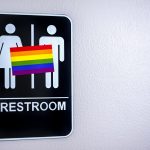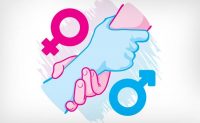“pretend you are A White Male”: Freelancing’s Gender drawback
for those who’re a freelance writer, nearly all of your editors are most definitely male, and nearly all of your colleagues are most definitely female. That’s no longer just an anecdotal generalization.
The American Society of reports Editors (ASNE)’s latest file confirmed that, on reasonable, women make up simplest 37% of newsroom staffs and hold most effective 35% of supervisor roles. but ladies account for roughly seventy three% of journalism grads and represent about 70% of enrollees in MFA programs in the U.S, in step with a file from the women’s Media heart.
As traditional salaried writing careers turn out to be extra uncommon, both former newsroom staffers and journalistic greenhorns alike are diving into the sector of freelancing. For some it’s by way of choice, however for up to two-thirds, it’s circumstance.
for ladies, pushed to the margins of the media trade, freelancing is ceaselessly the one manner forward—and, now not tremendously, wages have come to reflect the gender hole.
The “crimson Collar” Sector
though knowledge is scarce, a 2012 “Freelance trade report” of over 50 professions discovered that 71% of freelancers had been feminine. In other words, freelancing flips newsroom demographics on their head.
despite the gender domination of freelancing, feminine freelancers working within the media sector may be experiencing a major pay gap. according to a 2015 survey by way of the author’s Union of Canada, feminine writers earn only fifty five% of what their male counterparts make. That disparity is far worse than the estimated 77¢ on the buck women earn relating to males on the traditional labor market within the U.S (in Canada, the pay gap is also as low as seventy three%). knowledge about variations in the pay of freelance writers in the U.S. is lacking, particularly because the division of Labor hasn’t examined the state of impartial contractors since 2005. The 2005 survey did, however, discover a 42% pay hole between full-time male and female unbiased contractors, and a 35% pay hole amongst part-time independent contractors (see page 82 in the record).
“it is very important acknowledge that low-paid freelancing as ladies’s work will not be a new phenomenon, however in truth, it may be traced to the late nineteenth century, when women first entered the journalism personnel,” writes Errol Salamon, a PhD pupil in communique studies at McGill college who has been exploring this phenomenon in his guide Journalism in obstacle and in a series of articles on the Canadian Media Guild website online. “the variation is that, lately, increasingly ladies have entered the staff, and the low-paid ‘opportunities’ have multiplied due to the explosion of on-line journalism within the mid-Nineteen Nineties.”
“Freelance creator” as a job title doesn’t simply duvet onerous-hitting journalists. It additionally includes those who have braved the dreaded “content farm” web sites, which often supply as little as $3.50 an editorial. web sites like Freelance mom disclose an unsung writing team of workers that’s, in step with journalist Andria Krewson in ReadWrite, “overwhelmingly girls, often with youngsters, steadily English majors or journalism students, on the lookout for a technique to do what they love and make a little money at it.”
whether or not you call it the “pink collar sector,” “the glass ceiling,” “the wage penalty,” or being “nickel-and-dimed,” ladies are disproportionately herded into unstable, low-wage occupations. And even after they do break into a male-dominated profession like professional writing, that profession subsequently becomes devalued.
What Makes A Wage gap?
Like the conventional wage gap, the reason for the obvious freelance wage hole possible stems from a lot of advanced factors: from economics to variations in gender expectations to outright discrimination.
Making issues tougher is the lack of transparency within the freelance market. Many freelancers living out of doors of main cities like NY city and San Francisco won’t have a variety of face-to-face contact with fellow freelance writers; most publications don’t record their standard article rates up entrance; and apart from a few extraordinary exceptions, most freelancers aren’t broadcasting their tax returns.
Jessica Scott-Reid—a globetrotting freelance creator who has labored for Vice, the Wall street Journal, and Canada’s national publish—put it succinctly in an email: “I don’t in point of fact have any male freelance author pals, so i’m not certain if i’m making not up to them or not.”
beyond a lack of economic transparency, part of the difficulty can be a smartly-documented “confidence hole.” An oft-quoted statistic from a Hewlett-Packard interior file states that males will follow for a job after they meet 60% of the position’s qualifications, while girls will seldom practice with out assembly a hundred% of the factors. girls are extra inclined to feeling “imposter syndrome,” a nagging irrational worry of being underqualified.
This self-notion isn’t just paranoia, both. Novelist Catherine Nichols conducted an experiment through which she sent out ebook proposals beneath a male nom de plume, “George.” She sent out 50 queries, and underneath the title George her manuscript used to be requested 17 instances, in comparison with two underneath her actual identify. He was once, in different phrases, “eight and a half of instances better than me at writing the identical ebook.” What’s more, Nichols mentioned publishers have been kinder and more helpful to “George.”
Many feminine writers toy with the idea of a new moniker, depending on where they’re pitching: Scott-Reid informed me she has reflected changing into “Scott Reid” when pitching to outdoor lifestyle magazines and sports activities outlets, wondering if “Scott” can be more more likely to get a response and a byline.
the place female Writers Write—And where they do not
way of life writing is a box the place ladies can possibly feel more confident getting a paycheck, and a slew of “female-friendly” offshoots of mainstream publications—like the day-to-day Mail‘s Femail and Gawker’s Jezebel—provide a pink-hued platform for girls’s writing.
in the Guardian, Lou Heinrich calls the explosion of reports sections and new media publications targeted at women “purple ghettoes,” where subject matters like parenting, cooking, style, celebrity, magnificence, body positivity, sex, and feminism dominate.
“by way of and large, amplifying ladies’s voices is certain and a step forward for the legitimization of female expertise,” Heinrich wrote me in an e-mail. “however to denigrate women writers handiest to girls readers reinforces patriarchy: the concept mainstream society is developed by way of and for men.”
Heinrich’s perception of the ghettoization of feminine writing and opinions fits mastheads. although the gender break up varies extensively from e-newsletter to newsletter, editors and high columnists within the “giant subjects” are overwhelmingly male, with politics (65% male), sports activities (95–ninety nine% male), literary criticism (fifty three–seventy eight% male), film reviews (70–82% male), and op-eds (seventy five–85% male) being some of the extra egregious examples.
As a female freelance author, I’ll even cop to thinking it used to be an extended shot pitching this very article to the four male editors here at the Freelancer. though anecdotes are naturally different than based information, this is simplest the second time I’ve ever been employed via a male editor in a year of freelance writing.
Even with publications that namely request submissions from ladies and minorities, males can still dominate. The awl actively discourages white adult males from pitching so that you can stage the enjoying field, however even with the submissions set up as they’re, a male editor who requested not to be named cited that “males nonetheless reasonably outnumber women in pitches, and particularly in more bold pitches.”
Brooke Binkowski, an editor at Snopes and a veteran freelance reporter on U.S.–Mexico border considerations, informed me that she ceaselessly struggles with getting bylines on certain political and social considerations.
“It has been actually tough for me to get traction on sure stories, specifically those which are gritty,” she mentioned. “the ones that people are in point of fact into from me are tales about child intercourse trafficking and femicides. they’re each priceless issues to cover, however i will be able to’t help however notice that they each contain women and children. When i’ve pitched different things—as an instance, staff’ uprisings and ensuing violence—i’ve been actually exhausting-pressed to get responses.”
STEM topics aren’t significantly better. The Science Byline Counting venture, an eight-month learn about from 2014, printed that while women and men wrote comparable numbers of STEM stories (855 from ladies to 867 from men), men wrote 81% of options in Scientific American and 73% of options in Wired.
Even experts in journalism stories are overwhelmingly male.
within the the big apple times, men are three.four instances as doubtless to be quoted as sources than ladies are; on the whole, men are seventy six% of individuals featured in news tales. whether or not that’s as a result of a pervasive patriarchy the place men tend to be in positions of power, or from a bent of male journalists and editors reach out to different male sources (or a combination of the two), the end result is an much more skewed presentation of the news.
Paths forward
regardless of the various challenges facing female freelancers, many have found that there are some perks to the freelance writing “administrative center,” because it have been.
“Working almost exclusively on-line or by means of cellphone has continuously made me really feel safer about pitching, interviewing, and other elements of my work,” Scott-Reid said. “I fear that being a young-ish female creator with a form of ‘girl next door’ appearance, if I had to face editors and subjects in individual, i would have a more challenging time being taken severely than I do when I get to existing myself exclusively by means of my words.”
Her recommendation to female freelancers looking to get within the recreation?
“Let your professional manner of communication and high-quality writing do the be just right for you,” she mentioned. “In different phrases, do the best job that you can, personal your work, and don’t supply editors any cause to have a look at you in a different way than anyone else.”
Binkowski’s advice was once rather more blunt: “pretend you’re a white male.”
this text in the beginning appeared on The Freelancer and is reprinted with permission.
(15)














